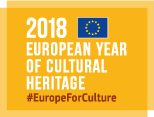STORM - A toolkit of methods and technologies to protect CH against extreme weather and climate changes
Challenge: WHY the innovation has been developed? What problem is addressed and why has not been not solved before?
Protection and conservation of CH is a value for all the civilised Countries since centuries. Cultural identity preservation is also a wealth creator producing tourism-related business opportunities on which many communities depend. However, Europe’s heritage assets are extremely exposed to climate change and natural hazards. As a result, the goal of STORM is to provide improved and effective mitigation strategies to leverage innovative decision-making tools and technologies in order to smoothly support the evaluation of historical records, real-time on-site monitoring, regional climate projections, and statistically downscaled time series on individual cultural heritage sites. STORM also exploits the concept of humans as sensors, giving them an active role in protection of Cultural Heritage. In addition, climate indices are evaluated to create a full working situational picture. Finally, STORM focuses on the implementation of Intergovernmental Panel on Climate Change projections.
Solution: WHAT the solution is about? HOW it goes beyond the state of the art?
STORM provides technological and procedural tools and methods to support decision makers faced with climate change and natural hazards during the Disaster Risk Reduction lifecycle, including prevention, preparedness, response and recovery activities. Specifically, STORM proposes a set of novel predictive models and improved non-invasive and non-destructive methods of survey and diagnosis, for effective prediction of environmental changes and for revealing threats and conditions that could damage cultural heritage. To this end, STORM determines how different vulnerable material and structures are affected by extreme weather events and risks associated to climatic condition, offering improved, effective adaptation and mitigation strategies, systems and technologies. An integrated system featuring new low-cost compact eco-friendly sensors, resilient solutions and survey and diagnosis technologies (including LiDAR and UAVs), as well as crowdsensing and crowdsourcing techniques will be provided over a collaborative, cloud based platform for collecting and enhancing knowledge, processes and methodologies on sustainable and effective safeguarding and management of European CH.
End-users and examples of uses: WHO will beneficiate/ is beneficiating from the solution? WHERE and HOW the solution has been adopted? How will impact people or end-users? Add as more as possible examples of market and society uptakes
Actor of STORM is a unique multidisciplinary team consisting of 20 Partners and 2 associated ones (the Superintendence for Pompeii, Herculaneum and Stabia, and ICCROM). An array, supported by scientific excellence and technical innovation, providing all the competences needed to ensure the implementation of functional and effective solutions in the management and preservation of cultural heritage sites (e.g. architects, restorers, archaeologists, site curators, seismologists, meteorologists, climate change experts, sensor providers, ICT service providers, civil protection, rescue organisations, policy and decision makers, and critical but often forgotten – citizens and site visitors). One of the main goal of the STORM project is to allow any CH user category to ensure the project impact at European level: authorities and site managers providing a sustainable mitigation strategy for their sites, while researchers and academies through the links and experience exchange with other scientific sources. As a result, scientific dissemination is a crucial issue to ensure transfer of knowledge and experiences which can give input to further research, improving the CH ecosystem. The concept is tested through pilot site at five different heritage locations, with unique risk profiles: the Baths of Diocletian in Rome; the Mellor Heritage site, Manchester; the Roman Ruins of Tróia, Setúbal, the Forteza Fortress of Rethymno, Crete; and the amphitheatre of Ephesus, Izmir.
Future possibilities: Future market perspectives when the innovation will be fully available or in use
STORM provides outcomes which are not directly usable from the market view point. Nevertheless, it will be provided some key results that could be the base of a professional service provision in view of future delivery of industrialised services and products. The most immediate outcomes from the market point of view are going to be of two types: a) Technologies: STORM technologies from the low-cost, eco-innovative, non-invasive, non-destructive sensors to perform surveys or real-time monitoring on CH assets are provided, although they are still at a “under evolution” stage. The project is also providing an integrated technology platform dedicated to cover situation awareness, diagnosis and quick assessment of CH before and after disaster, counting on AR, mobile crowdsourcing and innovative dashboards. b) Processes: supporting all phases in the disaster lifecycle from the prevention to preparedness, quick assessment and full recovery in an ideal circle along with adaptations and validation in existing policies, starting from the evaluation of the results of the experimental trail.
Media coverage
Articles, video, newspaper, etc.
References for more information (eg. website, social media)
Contacts:
Gabriele Giunta (gabriele.giunta@eng.it)
Application sectors:
- Historical sites
- Restoration and conservation of CH
- Heritage communities and participatory approach
- Enabling digital technologies for CH
- Risk management
- Cultural diplomacy and policy
Objectives:
- Supporting strategies, regulatory frameworks legislation and standards at EU and national levels
- Regional/Local development
- Knowledge sharing and education
RRI Dimensions:
- Public Engagement
Communities:
- Heritage at risk

